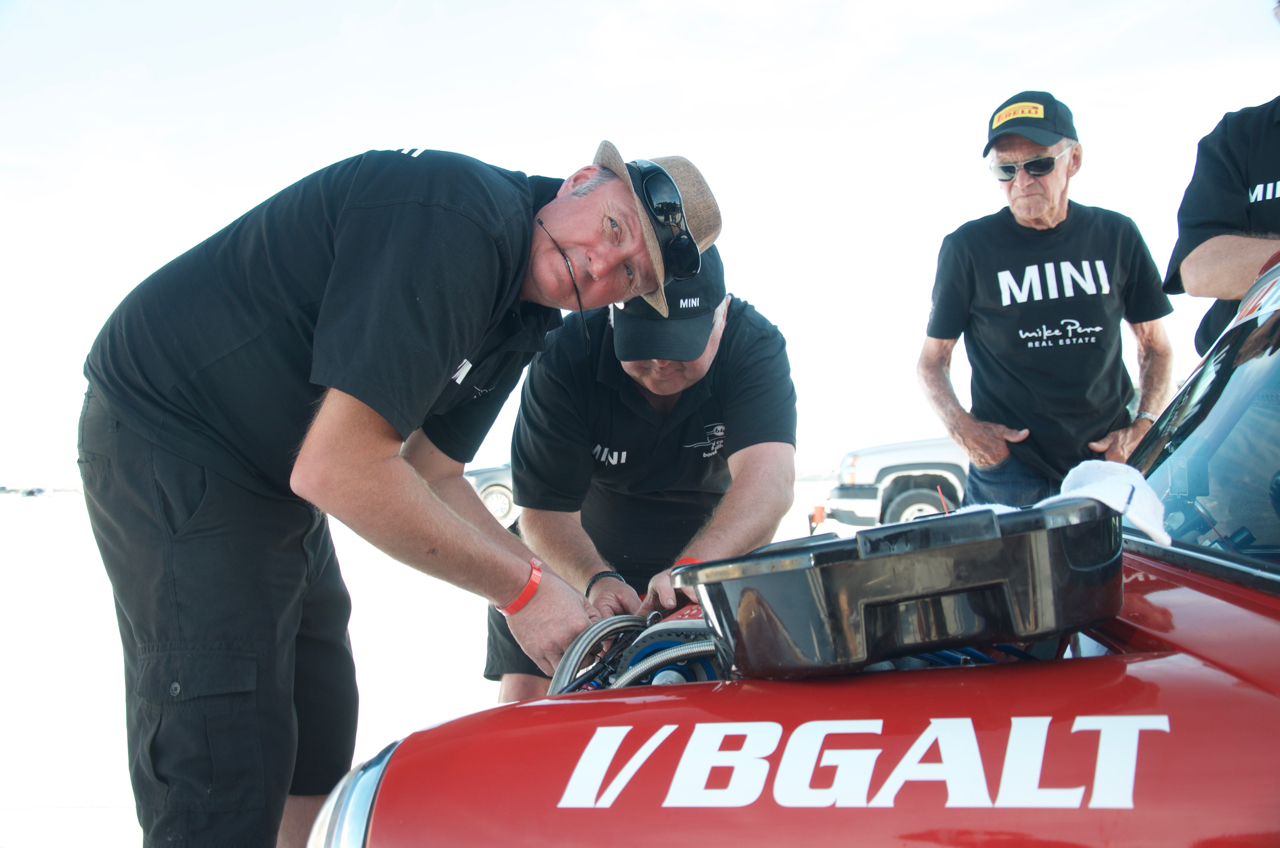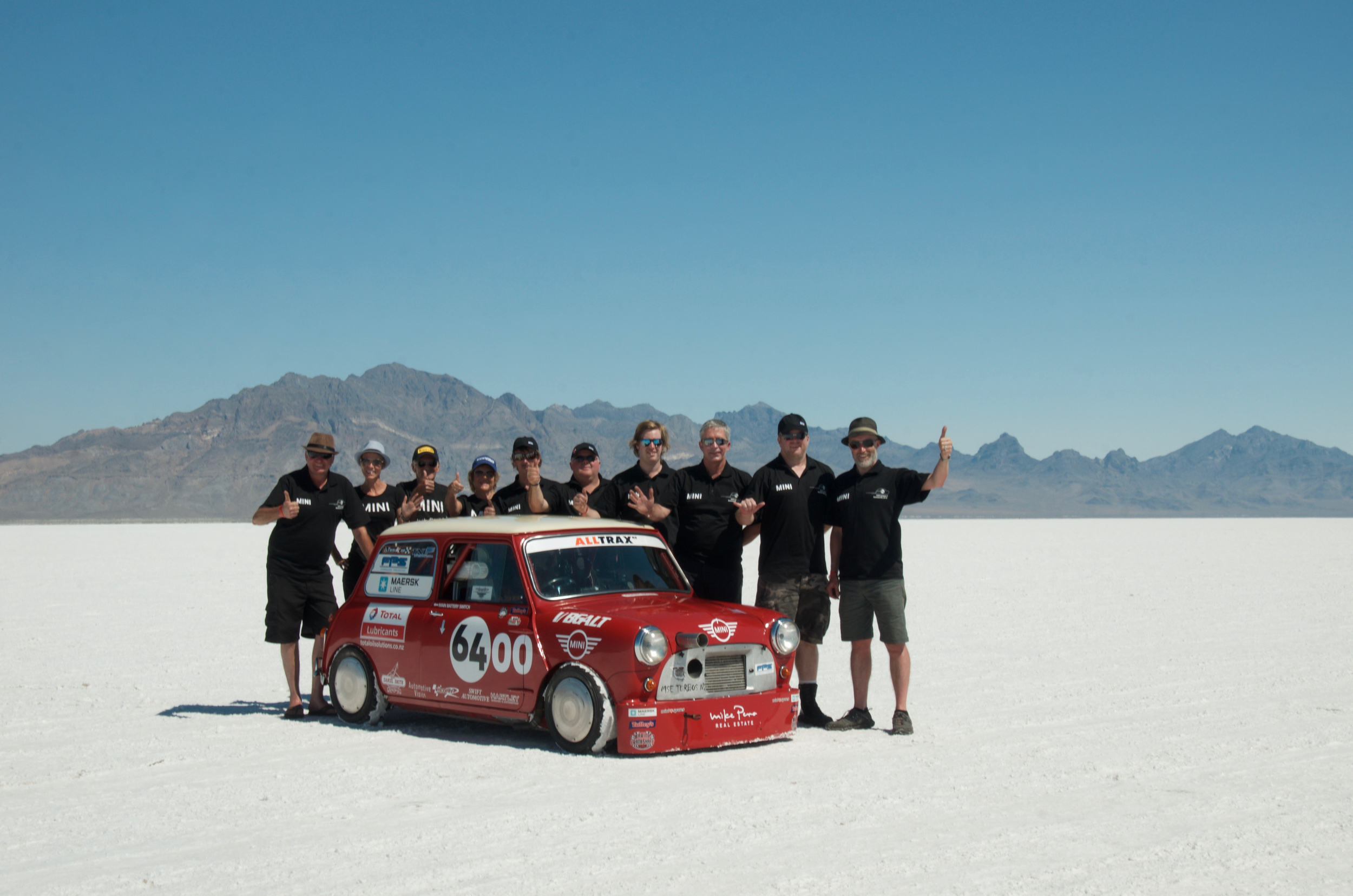data-animation-override>
“When Kiwis travel abroad to do battle, it’s a big deal, and a long way. So you may as well make the trip worthwhile, right?”
After making the decision to contest Bonneville Speed Week in Utah, the Project ’64 Mini Cooper team, based in the South Island of New Zealand, had been working extremely hard to get the Mini ready for battle. Now they’re there, though, they’ve already claimed two new land-speed records in separate classes in their 52-year old Mini Cooper.

The first record claimed was done during a tuning session for the I/BGALT class. Their speed during the session was 144.033mph (231.799kph), miles ahead of the previous standing 133.896mph (215.485kph) record. This class only runs a standard petrol mix, so when the team decided to switch to methanol, they had to move to the I/BFALT class.

With the switch to methanol made, the team yet again broke another record during a tuning run. The previous record was a 140.458mph (226.045kph) run, but the team beat this with a speed of 158.039mph (254.339kph). Unfortunately, an issue with a hose prevented them from backing it up, however, once the problem was repaired the team qualified with an impressive 153.710mph (247.372kph). Having to back up that run, the team went out the next morning and claimed an even more impressive 156.006mph (251.067kph). Might we remind you that this was done in an old Mini Cooper?

With a hunger for more records, the team will be switching classes yet again, so we’ll keep you updated on their progress as it comes through.


